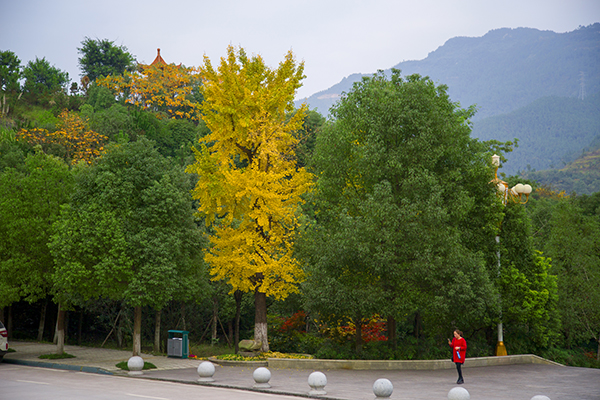Sichuan University of Arts and Science
Sichuan Academy of Arts and Sciences, located in Dazhou City, Eastern Sichuan Province, has a history of running higher education which can be traced back to Longshan Academy in late Qing Dynasty, which began to hold higher education in 1976, when it was called Daxian Normal College. In 1978, it was approved by the State Council as a full-time ordinary university, which was renamed Daxian Teachers College and Daxian Teachers College successively. In February 2006, it was approved by the Ministry of Education to become an undergraduate university. At present, it is the only provincial-administered general undergraduate university in eastern Sichuan. In 2016, it was designated as "the pilot unit for the overall transformation and development of Sichuan universities", and in 2018 it was added as "the construction unit authorized by Sichuan Master's Degree".
The school has two campuses, Lianhu and Nanba, covering an area of 1071.5 mu (1000 mu in Lianhu Campus and 71.5 mu in Nanba Campus), with a building area of more than 330,000 square meters. The library has more than 14433,300 books in paper, 450,000 books in electronic books, 670 kinds of periodicals in Chinese and foreign languages, and more than 89,000 yuan worth of teaching and scientific research instruments and equipment. There are more than 1182 faculty members and 7 Foreign teachers, including 632 full-time teachers (31.8% of the total number of full-time teachers with senior professional titles and 82.59% with doctoral and master's degrees). One person enjoys the special allowance of the State Council, six academic and technical leaders and reserve candidates in Sichuan Province, and three experts are outstanding contributors. There are 13 391 full-time ordinary students and 57 international students, and they are enrolled in 21 provinces and municipalities nationwide.
The school consists of Literature and Communication College, Marxist College, Political Science and Law College, Foreign Language College, Teacher Education College, Finance and Economics Management College, Mathematics College, Intelligent Manufacturing College, Chemistry and Chemical College, Architectural Engineering College, Ecotourism College, Music and Performing Arts College, Sports College and Health Industry College. There are 17 secondary colleges, including 50 undergraduate majors and 13 specialty majors, covering eight disciplines of literature, science, engineering, pedagogy, art, management, history and law. There are two provincial experimental teaching demonstration centers with provincial characteristics: chemical engineering and technology, basic foreign language experimental teaching demonstration center and culture and communication experimental teaching center. There are two provincial experimental teaching demonstration centers: outstanding engineer education and training plan project, outstanding teacher education and training plan reform pilot project, mathematical modeling teaching and research room and excellent teaching. There are 26 excellent teaching teams at provincial and school levels, such as teacher education, comparative literature and world literature, ancient Chinese literature, politics and administration, theoretical physics, etc. There are 8 provincial-level high-quality works (resources) such as mathematical analysis, thermology, ancient Chinese history, planning theory, history of Chinese new literature, foreign literature, higher algebra, scientific research methods of primary education, etc. Shared courses, 8 provincial application-oriented demonstration courses, such as printmaking, material mechanics and non-linear editing, and 88 school-level top-quality courses (open resources).

0 Questions
Ask a Question
Your email address will not be published.